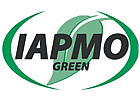
Two meetings that I attended recently have led me to one conclusion: The plumbing-and-mechanical industry is past the feel-good, “green is good” discussion on sustainable buildings. Now comes the hard part.
What’s up next are building owners and other end users seeking reliable answers on how to construct and maintain green facilities. Your role as an engineer in providing your technical expertise is critical.
This next phase is going to get messy. You’ll have to sort through conflicting information from different sources by becoming as knowledgeable as you can be about green buildings.
A number of organizations have issued their own green standards and ratings, some of which may conflict with one another. At last month’s spring meeting of the Plumbing Manufacturers Institute, members talked about the need to consolidate green standards from different associations in a way that reminded me of their discussions on consolidating trade shows. I’m concerned that we’re starting down the same path that will result in added expense and duplicated efforts.

More mixed signals are coming from Madison Avenue, which has discovered green in a big way. Consumers are being inundated with advertising that makes green claims for a whole host of products, only a portion of which purists would consider truly green.
This “greenwash” worries me only because it’s making some people skeptical about anything claiming to be green. While such advertising raises the public’s green awareness, it should not be allowed to diminish the important gains that sustainable buildings can make in energy efficiency and water conservation.
And even accepted green concepts such as graywater and rainwater reuse need an engineer’s expertise to turn them into practical realities. Presentations at the PMI meeting demonstrated how important the capture, storage and transport of recycled water are. Without proper design, these systems can create health hazards that far outweigh any green benefits.
At IAPMO’s Green Technical Committee, members argued whether multi-head shower systems have any place in a green plumbing code. While acknowledging that each showerhead may be water efficient, some members questioned whether a system with two or more showerheads is in line with green objectives.
Arguments among well-intentioned green proponents will continue to occur during this next phase of our industry’s involvement in sustainable buildings. People who are passionate on this subject should continue to air their views so that all voices are heard.
PM Engineer will continue to serve as a forum for different points of view on this subject, as well as an important source of information for you, through our magazine, Web site, e-newsletter and Webinars.
Any conflicts or disagreements cannot be allowed to deter our industry from the tremendous opportunity and responsibility we now have to make a difference.
